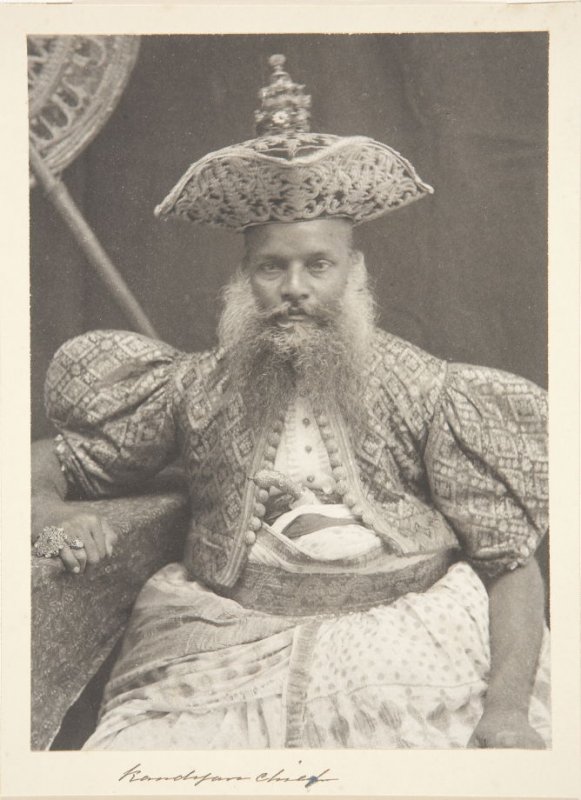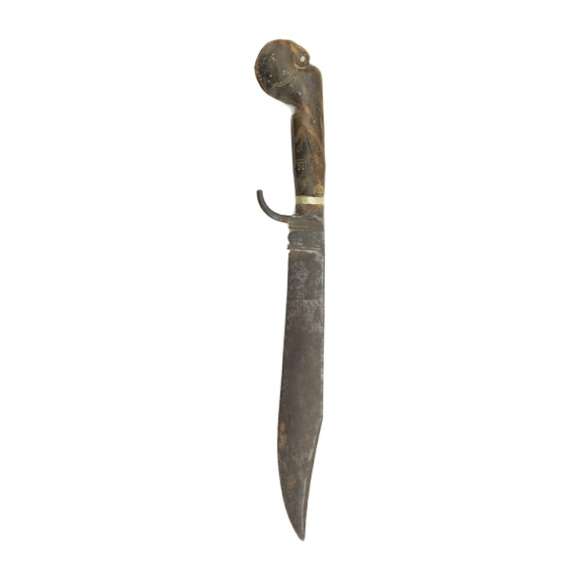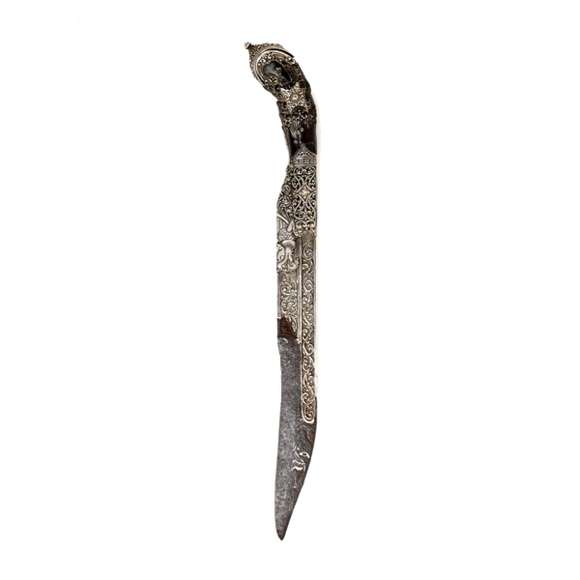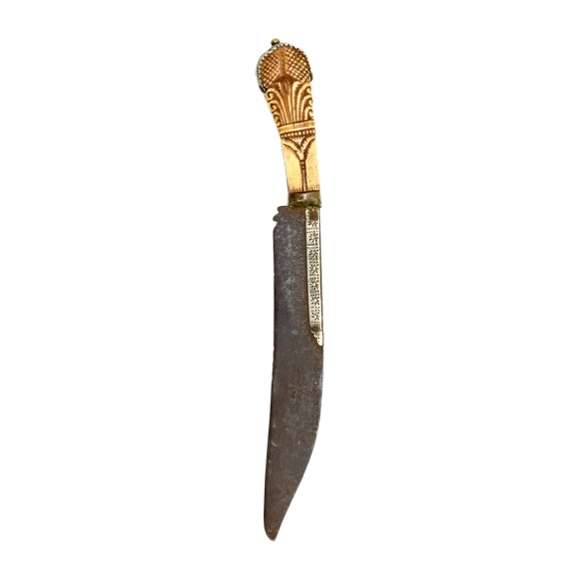With carved horn hilt and characteristic finger guard.

28.3 cm
17.1 cm
Edge 12 cm
Base 8 mm
At bend 7.5 mm
Base 27 mm
At bend 29 mm
302 grams
42 mm from bolster/hilt line
Iron/steel, silver, black coral.
(Antipathes orichalcea, non-CITES listed)
Kingdom of Kandy, Sri Lanka (Ceylon)
Late 18th century
From a European private collector
Introduction
A beautiful example of the ul-pihiya, literally "sharp knife", referring to the sharp point on these. Its larger chopper-like brothers and sisters are referred to as pihiya kättha, a term often used by collectors to refer to all ornate Sinhalese knives.
The better examples were made in the king's own Four Workshops (pattal-hatara) where artisans made them exclusively for the king, who in turn bestowed them to his nobles and officials. Adigâr, a class of appointed feudal lords that also acted as ministers in the king's court were presented with a silver mounted kasthāné, a cane, a halberd, and a knife as a sign of rank and office.
Robert Knox wrote in 1681:
"When he first promotes them [the Adigar] (…) he (...) gives them a sword, the hilt all carved and inlaid with silver and brass very handsomely, the scabbard also covered with silver - a knife, and halberd; and lastly, a town or towns for their maintenance. " 1
Silver is predominant on these knives and swords because in the Kingdom of Kandy, only the King himself was allowed to wear arms with hilt and scabbard constructed out of gold.

A Kandyan chief with his knife tucked in his sash.
Photo by W. L. H. Skeen, circa 1860–1890.
Fine Arts Museum of San Francisco, accession number 200.75.4
Notes to introduction
1. Robert Knox; An historical relation of the island Ceylon, in the East Indies. Printed by R. Chiswell. 1681. Page 53.
This example
It has a slender, elegant blade with a slightly recurved edge and tip and a wide fuller near the spine. The spine and the base of the blade are chiseled in relief and then covered with silver sheet, pressed neatly over the carved designs to create a relief. The exposed tip of the blade is further decorated with fine silver inlay.
The solid silver bolster is cast and chiseled in a multitude of curls called liya-pata, one of the most characteristic elements of Sinhalese decorative designs. The full-tang hilt is covered on either side with a slab of black coral, again carved in elaborate liya-pata. It is riveted to the tang by means of three silver rivets, each peened over an ornamental silver washer.
The pommel is covered by a silver plate, chased and chiseled in relief with typical Sinhalese scrollwork. The tang end is peened over a silver knob. the sides of the tang, and the spine of the blade, are plated in silver. The blade's spine is then engraved with traditional circular motifs.
Condition
In near-excellent condition, which is rare for these, with no apparent losses or significant damage. Only some of the usual signs of age.
No scabbard.
Conclusion
A very nice example of one of these knives, in near-excellent condition. When evaluating the work on this piece through photos, keep in mind that it is fairly small. Smaller objects may appear coarser than they are in photos, they are best appreciated in-hand.













Of nice quality, with unusual openwork silver bolster with serapendiya.
With a very fine Nepalese blade, but kard-like hilt and scabbard.






